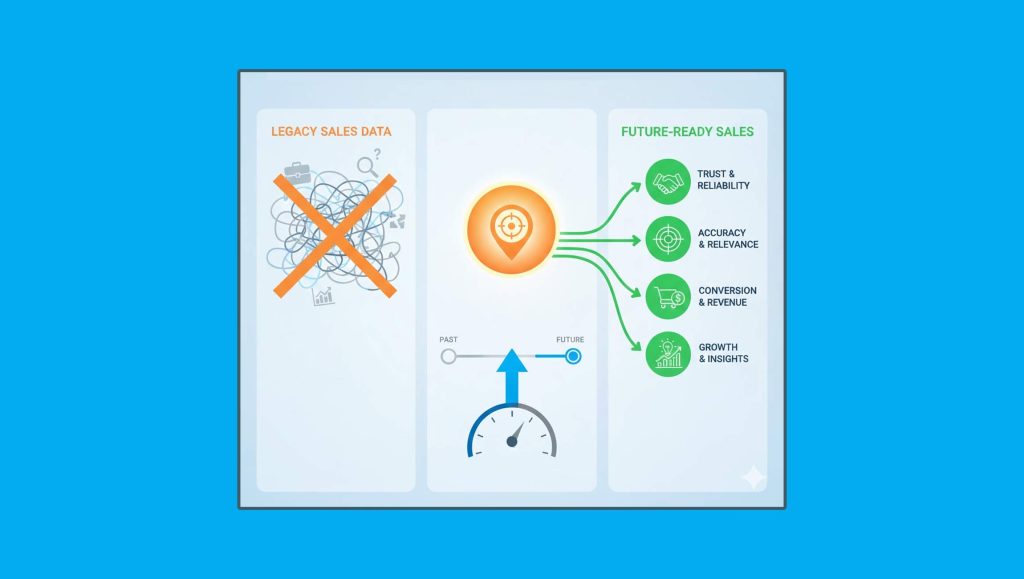As the name suggests, Robotic Process Automation(RPS) enables you to automate processes. Software Automation is a technique that operates within software and reduces the need for human labor. Today, RPA is playing a very crucial role in supply chain management. It has revolutionized the way in which a business functions. End to end management of supply chains has therefore become more smooth and convenient.
The exchange of products and services between the organization and its suppliers is included. These words combine to create RPA in Supply Chain, which has allowed for effective Supply Chain Management across sectors. Contrarily, it is the new lever that drives process effectiveness and efficiency. By automating simple & repeated problems, it lessens the workload of employees managing RPA in the supply chain.
It entails procedures for delivering a product or service to the client. Vendors, merchants, producers, warehouses, transportation firms, and distribution centers are a few of the enterprises active in the sector. As demand rises, it enables firms to quickly scale up to meet their needs. Supply chain management is only one of several businesses that employ robotic process automation (RPA) to automate repetitive, normal processes. It may be used in the sector to automate a variety of tasks, including order processing, data input, and inventory management.
How RPA relates to Supply Chain Management (SCM)?
RPA is used to automate and expedite the tasks in supply chain management. RPA defines the business supply chain process and aids in reducing inefficiencies throughout the business as part of the continuous digital transformation. RPA can be used to integrate and automate data-driven tasks as well.
RPA has advantages including lowering long-term costs, stabilizing labor and utilization, lowering mistake rates, reducing the frequency of inventory checks, raising worker productivity, improving access to hazardous locations, and optimizing, choosing, sorting, and storing times. RPA eliminates manual input of purchase orders and other administrative tasks and responds to supply chain requests and proposal quotes or questions. It helps in creating seamless integration of supply chain systems and tools.
It helps in deploying a smart software bot for the RPA and automates the operational processes throughout the business and the bots are intelligent agents that can learn how specific the repetitive tasks are performed and eliminates human error and reduces the overhead. The breakdown of RPA benefits are given below:
1. Helps in processing the order and payments:
The order placement and processing comprises three phases where first is selection of a particular product, second is confirmation of the order and third is processing and maintaining the payments.
An effective solution can send out auto-generated email and text message confirmation for the confirmation of orders, payment gateways can process the necessary amount, and information or data can be instantly injected into the company database.
Organizations can manage touchless invoice processing, increase labor productivity and efficiency, and improve the supplier’s access to finance by using a network platform to connect the enterprise supply chain to suppliers and financial institutions.
2. Inventory management automation
Machine learning and artificial intelligence-powered technologies can easily handle repetitive processes like demand forecasting, inventory allocation, stock replenishment, assortment and financial plans, seeding, markdown calculations, etc. In India, there are various supply chain courses that provide in-depth education on the subject, which is one of the supply chain’s pillars.
3. Warehouse Management
A warehouse management system (WMS) makes sure that there are no inventory errors made during the receiving, picking up, and shipping process, putting process control and auditing in place. For WMS to execute the task, the item ID and amount must both be verified. Tools driven by RPA allow for a decrease in human inventory errors.
The necessity for automation in the warehouse has increased as a result of COVID. It is advised to learn more about the topic with the aid of supply chain online IIM courses considering the current situation and the unpredictability of the future.
4. Risk reduction and procurement
Risk management and requirement manual processes slow down agility and increase lead times. Organizations can automate compliance duties and save time and labor by implementing a network solution that includes RPF. Trade content and compliance information make up every transaction.
The speed of the procedure is increased by digitally adding these pieces. By expediting delivery through an expanded sales process and greater cost management, it also increases profitability. Due to visibility, which makes sure that shipments are moving as anticipated, buffer inventory levels as well as detention and demurrage expenses are decreased.
Read More: Marketing Agency Sales in 2023: Investing In Tools And Tech To Attract Clients
RPA’s advantages in vendor selection and procurement
The food producer used a highly manual process to choose and acquire vendors for seeds, fertilizer, and transport materials. Employees had to prepare an RFQ (request for quotation) package, communicate with vendors, conduct a preliminary analysis of vendor documents, evaluate the vendor, conduct a credit check, and finally choose the vendor.
The bulk of these procedures were able to be automated when Robotic Process Automation was implemented by the business. Only the initial project specification work, creating a list of possible suppliers, and conducting in-person site inspections and negotiations need human interaction. The food manufacturer was able to reduce cycle time and processing time after automating by 25–50% and 15–45%, respectively.
Notification about shipment status
Customers frequently ask the food manufacturer in question on the progress of their order shipping. Before automation, all communication regarding shipment status was done manually. An employee would receive a customer email and open it, as well as open the shipment system to locate the ERP shipment record. The worker then gathered the required data, updated the client on the case’s status, and closed the case in the system.
However, RPA was able to open the email system, recognize text from the customer, log into the shipping portal, determine the status of the cargo, reply to the customer, and move on to the next customer email – with human involvement only being necessary in exceptional cases.
RPA’s advantages in supply and demand planning
Planning is an essential part of managing any supply chain, especially when it comes to anticipating future supply and demand demands. Before automation, this kind of planning was a difficult task that required employees to look for and collect the necessary data from sources like vendors, customers, market intelligence, as well as the production and sales teams, combine the data into a standard format, run simulations, examine data exceptions, and confirm and communicate the plan.
The majority of these tasks, including obtaining and combining the necessary data from numerous sources, using data cleansing tools, translating the finished data into a plan, and communicating with partners, clients, carriers, and logistics teams, were all automated by the organization using RPA.
After automation, a human’s only responsibility was to manage robot exceptions, perform simulations, and organize supply and demand meetings to find an agreement on a plan. The food manufacturer achieved improvements in data collection and administrative work related to supply and demand planning of 20–40%.
Data entry automation
The manual entering of customer and order data consumes time that may be better used on duties that call for a more personal touch.
Data automation using Robotic Process Automation lessens paperwork and human labour, and it also remembers patterns like returning clients and orders as well as other time-saving capabilities.
Transparency and Operational Visibility
Traditional supply chains frequently have erratic lead times and a lack of transparency that makes it impossible to track the status of their goods. Due to advancements in digital technology, even the average customer is now accustomed to being able to track their online deliveries as they make their way from the warehouse to their front door. Why then shouldn’t companies anticipate having the same visibility earlier in the supply chain?
Poor connection has been the cause of the lack of openness during the last few decades. As more programmes and apps were added to boost productivity, they separated information into silos and caused gaps between programmes, making it difficult to track the progress of a process from beginning to end.
In order to provide total process visibility and orchestration, a low-code automation platform may link all systems and establish a central area where your staff can access information. Employees are given real-time data in this way, enabling them to act confidently when carrying out duties that depend on crucial information and providing them with the most recent status updates.
Consumers may readily receive a general idea of how their purchase is proceeding through the supply chain, which helps both staff and customers. Customer happiness today depends on traceability, and a low-code automation platform can offer the right visibility.
RPA and Supply Chain Management: Effects
Supply chains may improve their cycle times and agility using RPA, as well as their capacity and asset efficiency, receivables, and supplier, customer, and staff satisfaction. But it’s also critical to understand the forethought required to properly employ automation at scale, in addition to these advantages. Companies should establish a Robotic Process Automation governance team and steering committee, give careful consideration to selecting processes, and promote dialogues about staff redeployment.
A 43% time reduction in invoicing, managing data, credit, collections, etc. is the outcome of robotic process automation in supply chain management, which is a huge win for any firm. Supply Chain Management with automation boosts production, costs, and other factors for the firm. Both of these technologies have a very bright future.
Examples of RPA advancing logistics operations
RPA is being included into the supply chain through a variety of cutting-edge technologies. The multishuttle system was one of the early applications to arise. Larger automated storage and retrieval systems are composed of these systems. Their job is to transfer products from pallets to shelves and back. They do away with the requirement that workers physically move items across warehouses and store them for later retrieval.
Although supply chain analytics is extensively utilized, the modest RPA systems that run these sophisticated platforms are employed. RPA technology collects, formats, and cleans data using established protocols and defined routines, providing a solid foundation for strong analytics solutions. Stakeholders may be certain that they are viewing the full scope of data since data silos have been eliminated.
Additionally, RPA is built into optical scanners, which can identify products on as many as six axes. Data from these scanners is sent into larger warehouse management systems, which create conveyor routes, direct vehicle traffic, and designate camera lanes for drones. As a result, workers are in direct contact with robots that transport items along predetermined lanes for packing or storage. In the contemporary supply chain, these physical robots are also great instances of equipment driven by RPA.
Some businesses also use robots to choose products for order fulfillment. Since the picker obtains all pertinent information about the item to be transported, picking is a repeated job. This task can be completed swiftly by a robot while also removing mistakes brought on by weariness in manual methods.
In warehouses today, cutting-edge technology like smart glasses is being intensively tested. Wearers of these glasses are guided to certain spots in the inventory, saving time. Such augmented reality gadgets are powered by data from RPA systems, which also improves warehouse efficiency.
Read More: SalesTechStar Interview with Staci Satterwhite, COO at Khoros
Supply Chain Management RPA Use Cases
1. Start-up of purchasing orders
The buy order procedure, which is typically a tiresome operation for any firm, can be a component of a larger procurement effort. Processing purchase orders manually takes a lot of time and work. RPA is useful in this situation. RPA has the power to completely automate the purchase order process, saving time, removing human error, boosting productivity, and making the entire process much more effective and affordable for businesses.
Implementing RPA in the processing of purchase orders entails:
- Automated creation of purchase order paperwork
- Order submission for multiple-level approvals
- Data input automation
Maintaining an effective supply chain process lowers the chance of missed sales because of a material or stock shortage, enabling businesses to control the right amount of inventories. Businesses must be able to control their supply during periods of high and low demand.
Reports on the quantities of raw materials, items in progress, and finished goods are produced by production facilities. An RPA bot can be set up by IT to connect with the company’s CRM platform. The RPA bot can contact the right supplier through email or a purchasing site based on the information in the report in order to make an order.
The request would only need to be approved once the buying manager reviewed the alerts. This procedure might happen hundreds of times every day in businesses with several suppliers and significant volumes of manufacturing.
2. Controlling Orders
This supply chain RPA use case is focused on managing and processing orders. There are several wholesale clients putting orders from various locations, thus your online business needs an effective cloud platform with RPA capabilities. Before any shipments or billing, it will automatically process the orders and save the essential information. If your organization is B2B, your supply chain’s order management procedure has to be more intricate to accommodate the high volume of orders. Overall, any supply chain business or division that implements RPA will have little trouble automating a wide range of operations.
It might be challenging to integrate automations for routine and repetitive manual processes directly into the current ERP, such as load matching with transport availability and order management. The use of robotic process automation technologies can facilitate this.
These order management process features can be streamlined with RPA. Additionally, RPA may assist in combining data from various data silos, including organizational management modules, Excel spreadsheets, and online portals. These RPA bots may be used by front-line employees to complete additional repetitive duties like emailing, making phone calls, and compiling reports.
3. Handling support inquiries and post-purchase assistance
Ticket management and after-sale services may be totally automated with RPA. RPA will effectively complete the required tasks in place of any human intervention. By reducing processing mistakes and freeing up your reps’ important time, RPA technology can help your whole support team. Due to increased competition, this will be crucial for the company.
For instance, when a consumer submits a service request using a mobile app, a chatbot or intelligent virtual assistant can engage with the user and submit the request to the system, according to Hung. When working with RPA bots to collect and manage service ticket data, intelligent document processing systems may read data from a variety of service request document types.
A mobile app for third-party maintenance and reverse logistics partners can enhance visibility on location, arrival time, and turnaround time in the event that a client has to return an item for repairs. Real-time order tracking and automated customer email acknowledgement are also capabilities of RPA bots.
4. Planning for supply and demand
It can be difficult to anticipate and respond to the supply and demand dynamic, especially if you just use human labor. You will need to examine data and reports from various areas of the organization to prepare for the response to the process. All of these jobs are completed by RPA without any errors and without wasting any time.
5. Facilitating data transfer
This is a crucial Robotic Process Automation application case for supply chain management. Important cargo must be moved and kept in a timely, safe, and efficient manner. This requires dependable data communication to happen. If not, the company will suffer losses as it won’t be able to act on the right information. RPA improves the efficiency of analytics. This is achieved by offering suggestions that will assist in getting rid of any administrative obstacles like improper data formatting.
6. Predictive maintenance
Maintaining equipment is a crucial component of supply chain management, and RPA — working with other technologies — may aid by easing predictive maintenance initiatives.
For instance, IoT-based predictive maintenance may spot corrosion and pipeline problems in an oil and gas manufacturing facility, according to Hung. The sensors placed throughout the pipeline are then used by these IoT apps to collect data on the potential for hydrogen and gaseous content. Real-time sensor data retrieval from the apps is sent to the cloud for review, analysis, and prediction.
RPA bots take action based on this data, automating the process of scheduling maintenance, contacting customers who may be impacted, and modifying financial projections, according to the speaker.
7. Variety in the supply chain
In the aftermath of COVID-19, RPA may assist businesses in creating a more robust supply chain by automating supplier interactions.
To scale up any operations using automation, which makes them more robust, business executives should create a resilience automation strike team and a plan. RPA software and machine learning enable businesses to collect data from suppliers and clients, perform simulations, and consider alternative strategies. As a result, supply chains are more diverse. A request for a quotation package may be prepared with the aid of intelligent automation, which adds AI on top of RPA and gives access to a larger pool of providers.
The data from vendor documentation may be organized with the use of these same technologies, enabling technicians to compare it. In order to speed up the vendor selection process, RPA bots may also assist with background duties like doing credit and regulatory checks.
An industrial producer can employ a bot to automatically gather and compare monthly data from its extensive network of suppliers on sales predictions, manufacturing capacity, and supply, and to alert any limitations or differences. Other bots can check the information on new products to make sure that the bill of materials and other relevant criteria are correct and coordinated with engineering, purchasing, and planning systems. RPA is being used in this process to verify its supply chain planning.
RPA first appears to be a number of automated procedures running silently in the background. They are, nevertheless, far more important than they appear to be for supply chain efficiency. The plumbing for increasingly sophisticated technical supply chain components is provided by RPA procedures. Any company that takes the effort to adopt it will surely see a significant increase in supply chain efficiency.
Conclusion:
Implementing effective robotic process automation in the supply chain ensures that the data is captured and managed in a structured way so that efficient use of the information can be made. It helps in neglecting the changes to business processes elsewhere that can impact the supply chain operations significantly. RPA must be implemented in a good time and not in a hurry and if it is not integrated properly with the business processes it can create significant projects and operational overheads that are financially challenging.
Each and every aspect of the supply chain development must be inbuilt with RPA to ensure proper operations and integrations with other tools and platforms.





















